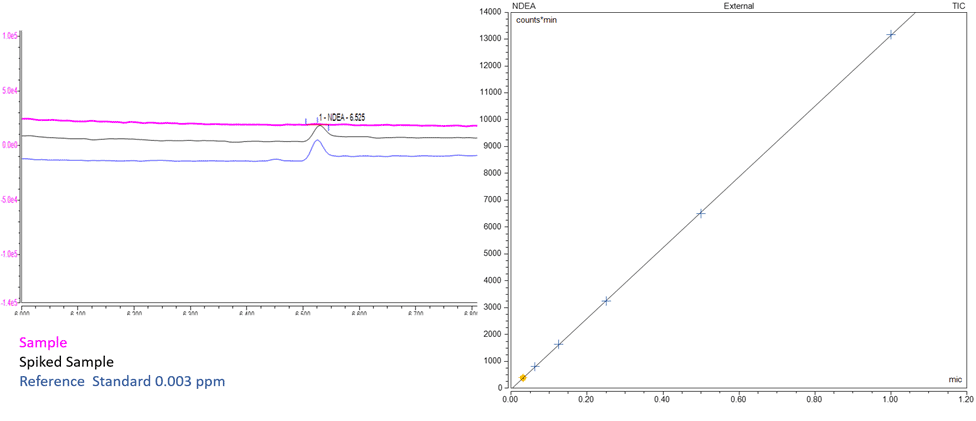Nitrosamines
Nitrosamines, or N-nitrosamines as they are actually called, are a highly carcinogenic class of substances. They can be formed from secondary and tertiary amines. Not only do Nitrosamines form during the synthesis of the active ingredients, but they can also be introduced as contaminants within raw materials and solvents. For example, DMF.
The WHO specifies very precise limits for the intake of different nitrosamines per day:
Nitrosamine | Allowed intake per day [ng/day] |
NDMA | 96.0 |
NDEA | 26.5 |
NMBA | 96.0 |
DIPNA | 26.5 |
EIPNA | 26.5 |
The authorisation holders must review their production process by 1st October 2020, in order to rule out any potential contamination.
Appropriate tests must be carried out if necessary.
The analysis of these substance classes can be complex. The detection limits must be low, the substance has no chromophore and the analytical method must exhibit a high selectivity.
Thanks to the state of the art equipment and more than a decade of experience in method development and validation, Reference Analytics is your competent partner in this difficult and complex area of analysis.
For example, the NDEA detection in an AT1 antagonist active ingredient can be seen here:

The analytical method used enables rapid and reliable quantification in a large number of solids and liquids. It is therefore suitable for incoming goods testing, but also as a final release assay on the finished drugs/medication.
If you have any questions regarding nitrosamines and their associated analysis, we are more than happy to assist you with our expertise.
